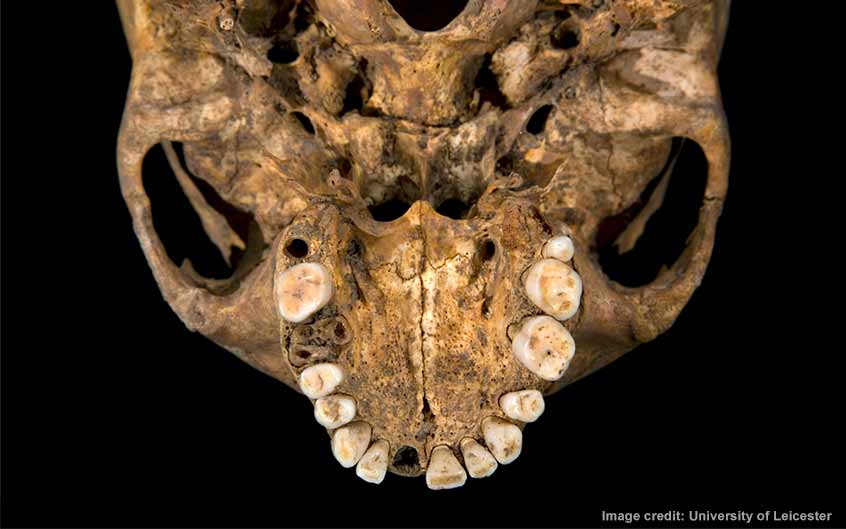Richard III: Discovery and identification
What the bones can't tell us
The bones came from an adult male aged between his late twenties and late thirties (Richard was 32 when he died). From the length of the thigh bone, we can calculate that Richard would have stood about 174cm (5’8”) if his back had been straight; however, the scoliosis would have reduced his apparent height significantly, making him much shorter than the average man in the medieval period.
Overall, the skeleton is rather slender for a male, but there is no sign of a withered arm. Several teeth were lost before death; the rest are lightly worn, with some dental calculus (calcified plaque) and a few cavities.

We cannot determine in which order the injuries were received – all that we can say for certain is that all of the injuries happened at around the time of death as there is no indication that any were starting to heal. In skeletons, it is not possible to distinguish between injuries occurring just before death and those occurring a short time afterwards. Therefore, interpretation of the wounds relies on knowledge of medieval weapons, armour and battles as well as on the bones themselves. The wounds on the pelvis and rib are in areas that would have been protected by armour during the battle.
Although it has been possible to identify many wounds to the skeleton, there are many ways to injure or kill someone which leave no mark on the bones and it is possible that Richard received additional wounds that we can no longer see.
The initial announcement of the body’s discovery described an ‘arrow-head’ in the spine. More detailed X-ray analysis of this corroded piece of metal has now confirmed that it is in fact a nail, probably left over from Roman activity in the area. This means that it was not related to the burial.